How To Plant Bulbs In The Fall For Lots Of Blooms In The Spring
Need some pointers on getting tulips to grow? These tips on how to plant bulbs in the fall will have your garden bursting with blooms when winter is over.
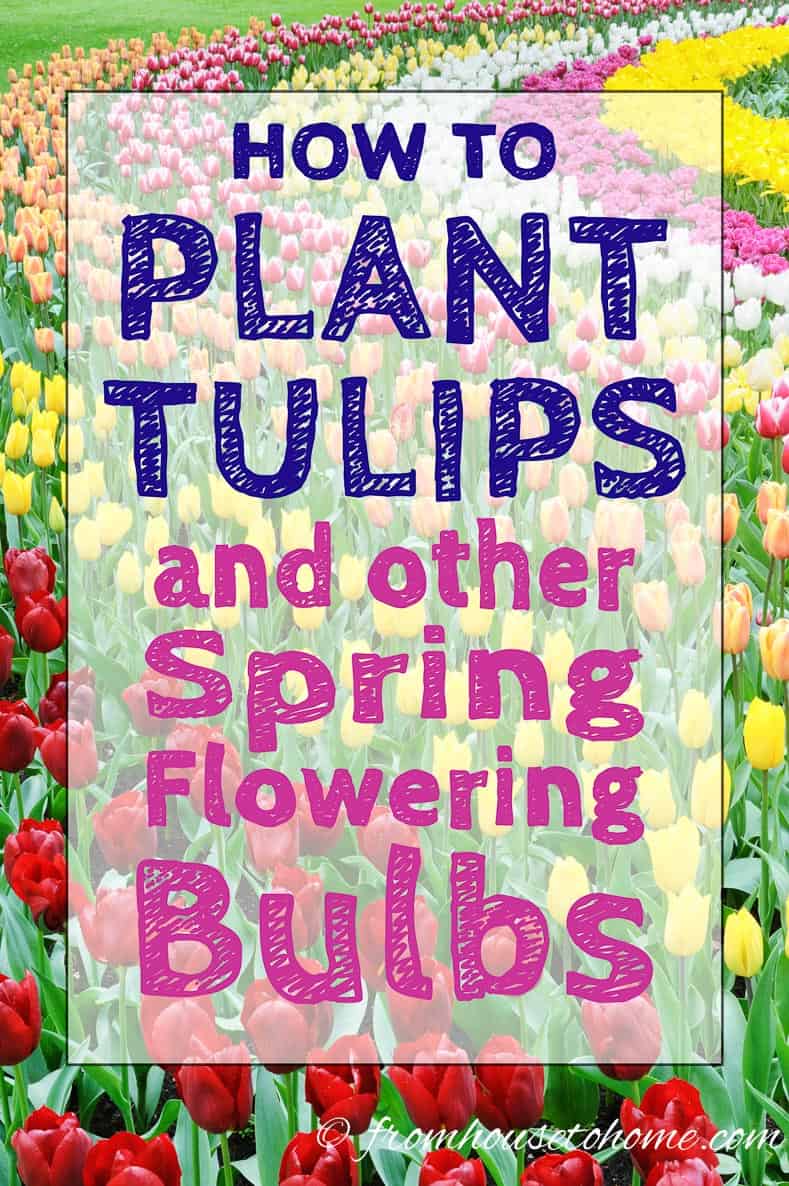
Usually this time of year, I'm getting a little tired of gardening and am ready to pack up my shovels for the winter.
Then I see some really pretty tulips in a bulb catalog and just have to have them. So I rush off to order a slew of new spring-flowering bulbs.
A little while later, they arrive in the mail by the hundreds (or at least it seems like that many!) and I wonder what I was thinking.
Because I'm really not in the mood for gardening.
So I spend the next 3 or 4 weeks procrastinating. (Even cleaning seems like a good excuse not to go out in the garden.)
Eventually, it gets cold enough that if I don't plant them NOW, it will be too late, and I will have bought all of those bulbs for nothing. So I finally force myself to do it.
But then in the spring, I'm so happy I did! Many of the bulbs are the first flowers to bloom, and they are a great way to welcome in spring. Plus most of them are so easy to grow.
Keep reading to find out all my tips for planting bulbs in the fall so you'll get lots of blooms in the spring.
1 | Make A Plan In The Spring
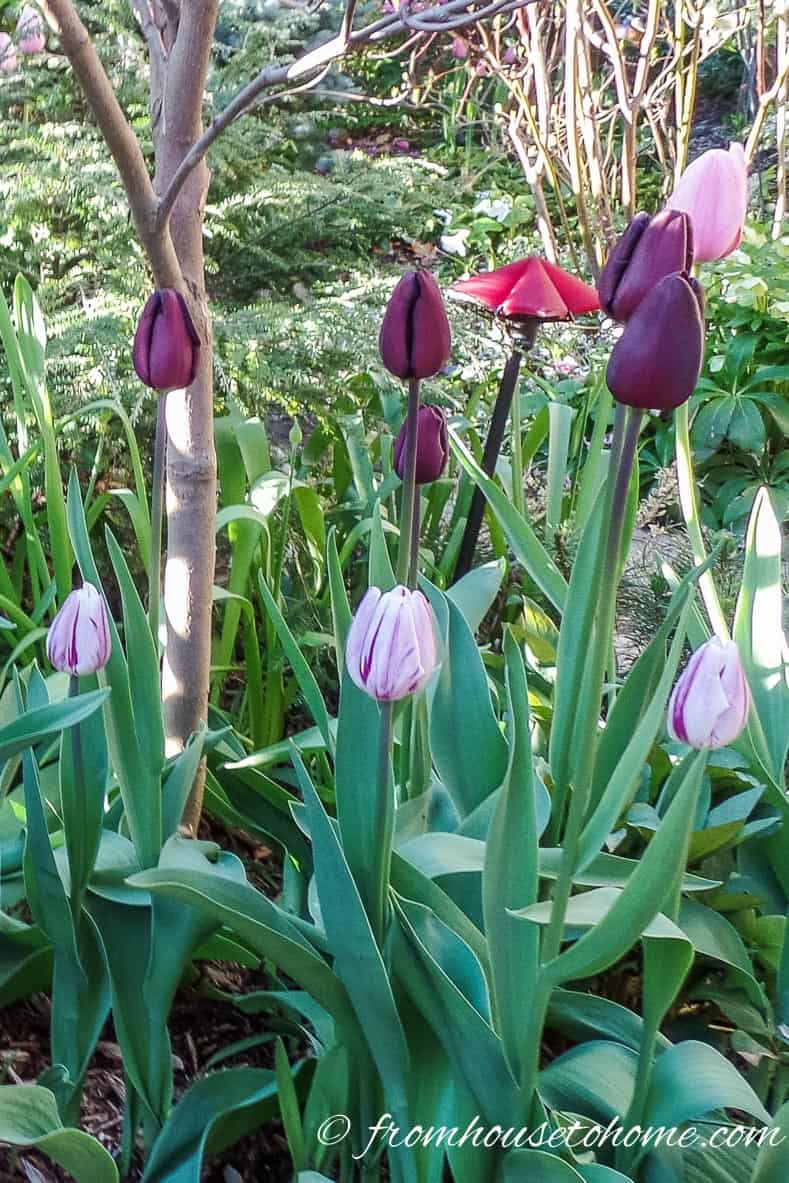
The best time to decide where to plant spring bulbs in your garden is in the spring when you can best assess what you need.
Although to be honest, I can't say that I follow my own advice very often. I'm usually “winging it”, just trying to find a big enough space to dig holes for them.
2 | Buy Healthy Bulbs
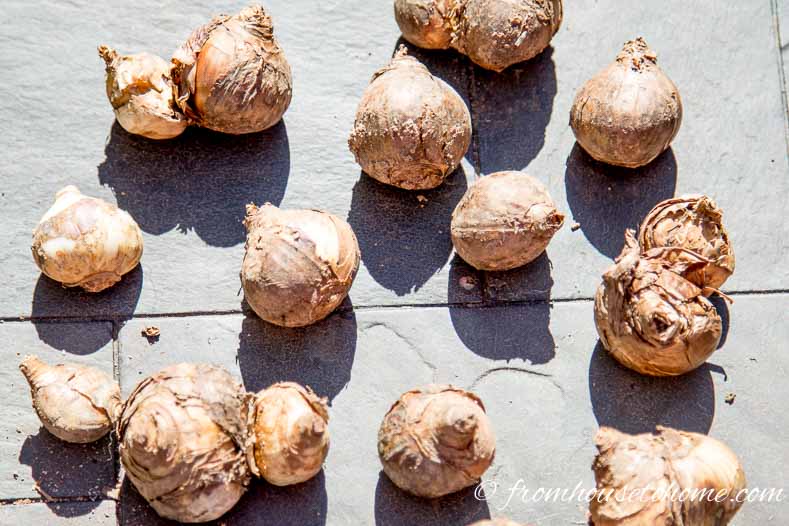
The first step to getting healthy bulbs is to buy them from the right places.
They deteriorate if left exposed. This is why I don't buy them at the Big Box stores and Supermarkets. You don't know how long they have been hanging around.
The cheapest and easiest way to get exactly the color, species and quality you want is to order from the catalog bulb companies (like Breck's*). The catalogs are well illustrated and online ordering is very convenient.
And don't worry…they will ship them at the right time for fall planting in your area.
If you cannot plant your bulbs as soon as you get them, store them in the refrigerator in a paper bag (away from fruit) until you can.
But plan to get them into the ground as soon as possible.
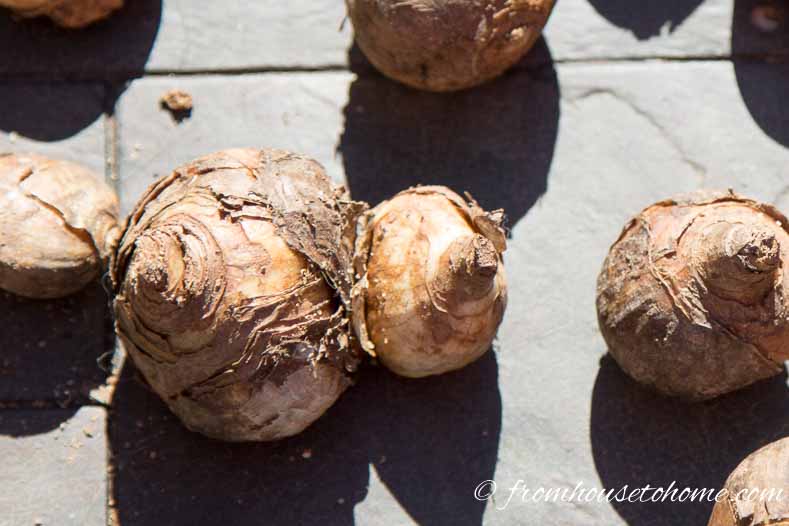
When buying bulbs in person, look for plump ones that do not have soft spots or mold growing on them.
Also, generally speaking, the larger the bulb size, the larger the flower will be. If you can find double bulbs like this one, you'll get 2 plants for the price of one (although the second one will likely be a little smaller, at least in the first year).
3 | Pick The Right Bulbs For Your Climate
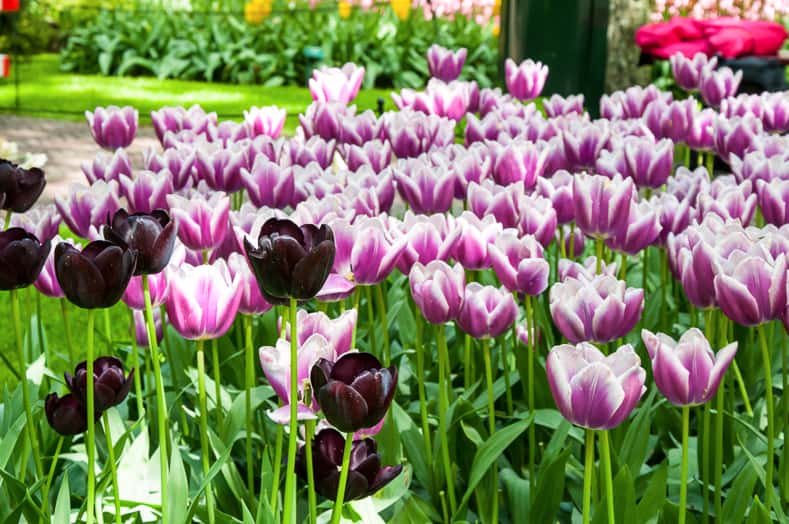
Most spring-blooming bulbs require a dormant period with cold temperatures in order to bloom.
So Northern gardeners definitely have an advantage when it comes to the selection of bulbs that will grow successfully.
If you live in an area that doesn't get a lot of freezing temperatures (like I do), look for bulbs that do better in those conditions (like daffodils, irises, allium and species tulips).
4 | Know Your Bulbs' Habits

Most fall-planted bulbs come back every year, but some of them are not reliable.
Like many of the fancy tulips. They are beautiful but often will not repeat at all.
However, I think they are so pretty they are worth treating as an annual.

If you want tulips that will come back (but are not quite as showy), try the species varieties.
They also tend to do much better in the south than the hybrid tulips. I grow them in my South Carolina garden and they come back every year.

Other bulbs, like scilla, will spread as far as you let them…so you may want to plant them in a contained area.

Still other bulbs, like Hyacinths, have a beautiful fragrance. Plant them where you will be walking by so you can enjoy it.
5 | Pick the Right Location

Most bulbs do best in full sun (more than 6 hours a day) and well-drained soil so make sure that you plant them in the right location.
The good news is that a lot of the spring bulbs bloom before the tree leaves come out, so you may have more sunny locations than you think.

If you really want to plant spring bulbs in a less sunny area, scilla and daffodils will tolerate more shade than other bulbs.
6 | Group Bulbs In Bunches
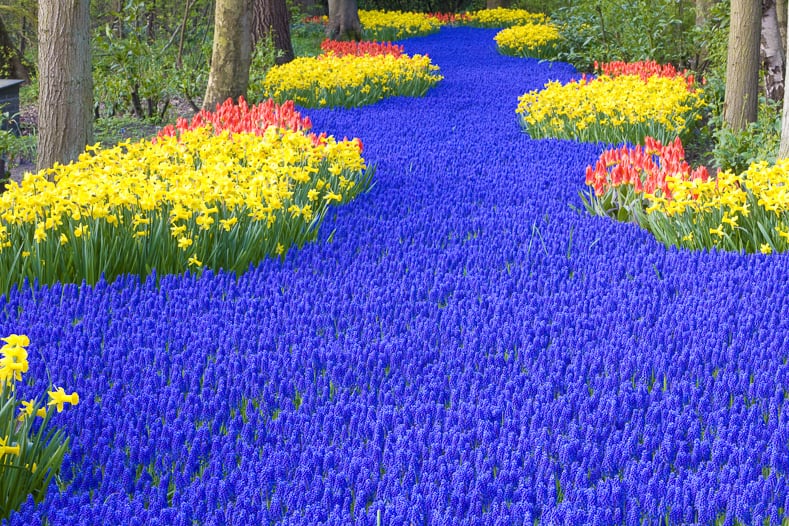
Each bulb will usually produce one or two flowers, which isn't enough to make much of a show if you plant them individually.
But they sure are stunning in groups!
Groups of at least 10 make the best display…and more than that is even better!
7 | When To Plant Spring Bulbs

Spring blooming bulbs should be planted in the fall once the soil temperature has started to cool but about 6 weeks before the first hard ground-freezing frost.
This is usually when average nighttime temperatures in your area are in the 40- to 50-degree range (September to October in the north, and October to December in the south).
Don't expect to see any above-ground growth in the fall, but the bulbs will be putting out roots and getting established before the ground freezes.
You can grow spring bulbs in warmer climates if you refrigerate them for 6 – 10 weeks prior to planting. They should be stored in a paper or mesh bag or an egg carton away from fruit (especially apples) which give off ethylene gasses that sterilizes the bulbs.
Don't be alarmed if you do see some leaves poking up during a warm spell in the winter. Most bulbs are pretty good at surviving snow and cold.
8 | How To Plant Spring Bulbs
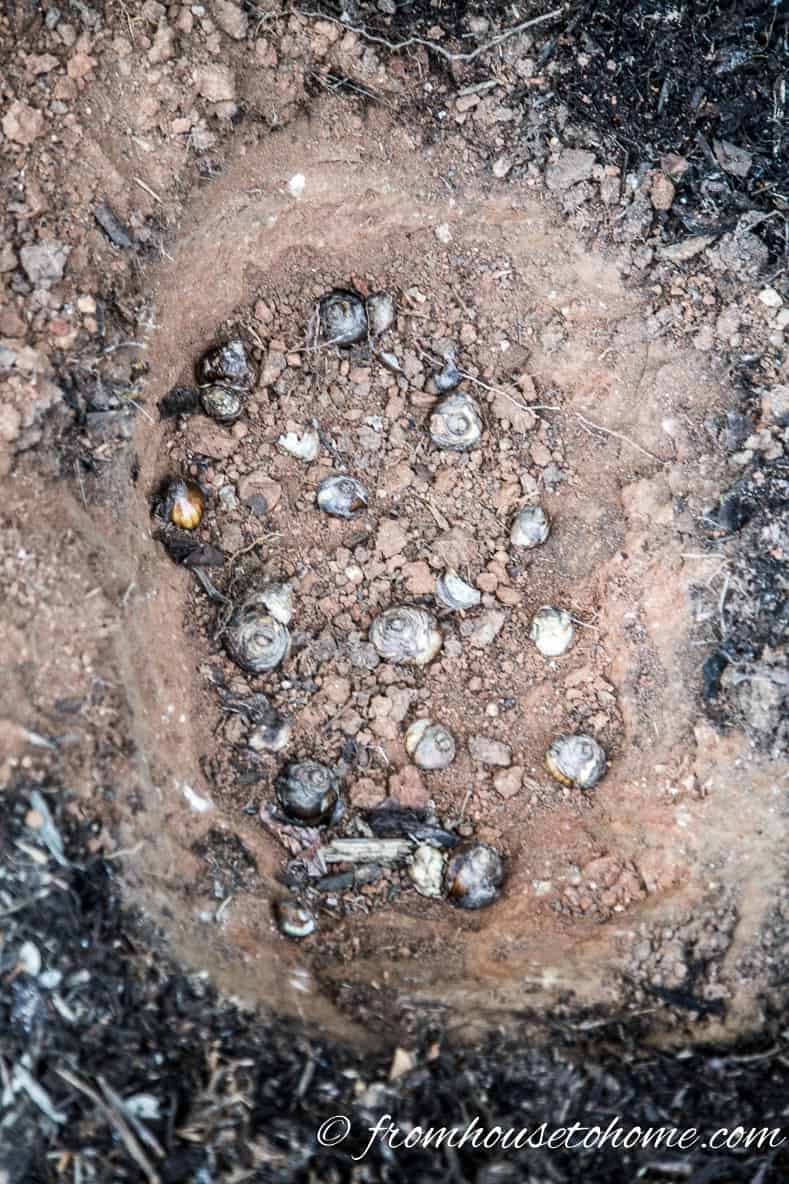
The easiest way to plant bulbs is to dig one hole and plant a group of them at one time. This also makes sure that you have a bunch of them together.
Dig a hole that is about 3 times the height of the bulb (eg. if the bulb is 2″ tall, it should be planted about 6″ deep). I also try not to make it round, so that it doesn't look too “planned”.
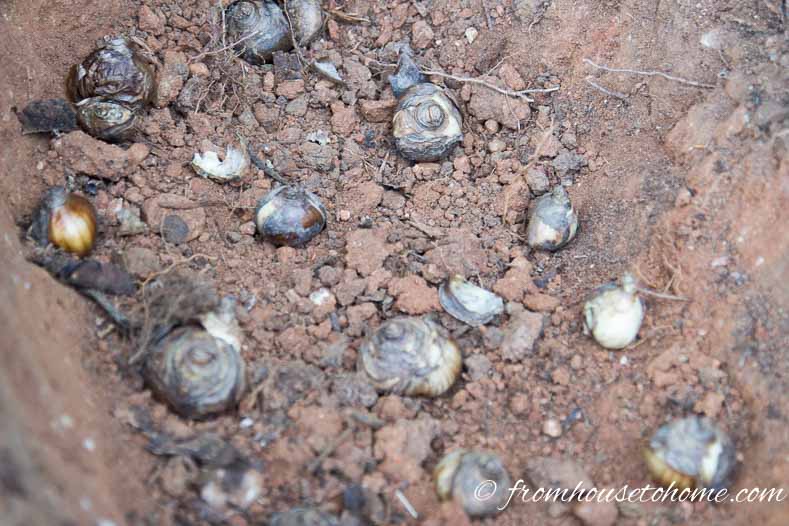
Arrange the bulbs with the pointy side up.
If you live in an area where squirrels like to dig up the bulbs, you can add some gravel to the hole to discourage them.
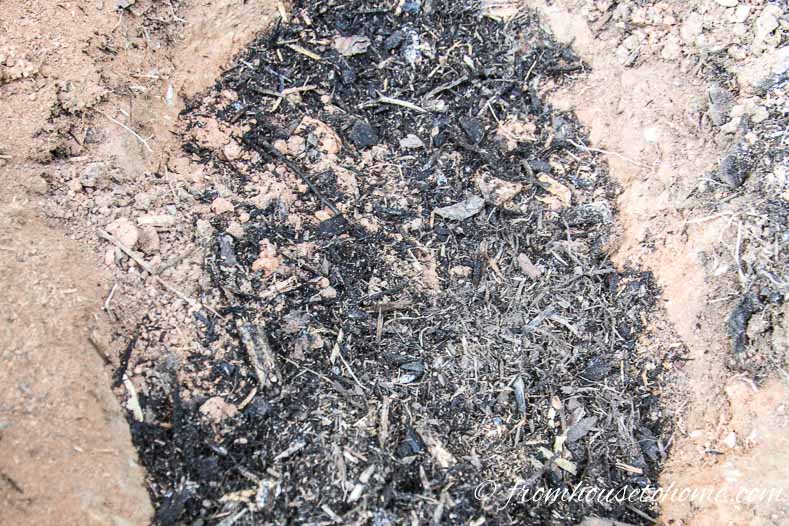
Mix the soil with some composted manure and cover the bulbs.
Adding a new layer of composted manure every fall will help keep your bulbs happy and blooming.
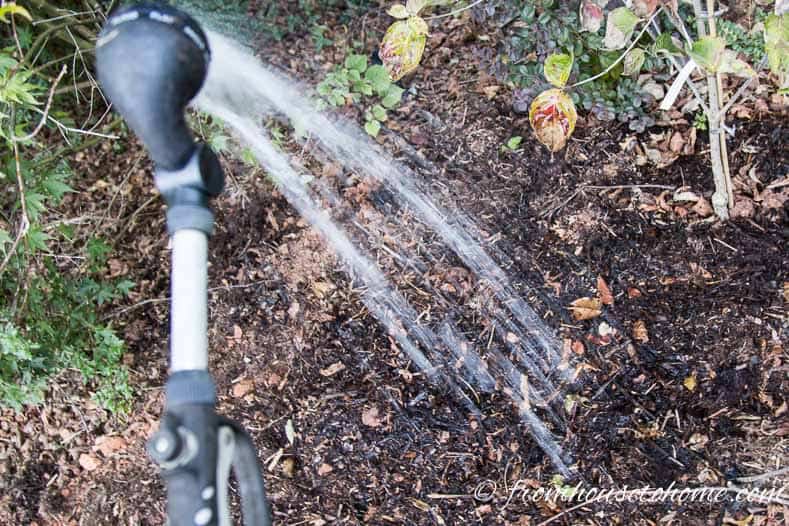
Cover with mulch and water.
Of course if you don't want to go through all the effort of digging a hole, the next best thing is one of these bulb augers*.
Attach it to your drill and it will dig the bulb holes for you.
Make sure to get one with a hex end (rather than a round one) so it doesn't slip in the drill.
And that is big enough to for the bulb size you are planting (2″ works well for most standard bulbs).
Also, I like the one with the long shank because I can stand up to drill the holes (but maybe that's just me being lazy?)
9 | Deter the Squirrels
If you live in an area with a lot of squirrels, a lot of your bulbs may not stay in the ground long enough to bloom. Squirrels love them!
There are a few things you can do to try to prevent the issue:
- Plant bulbs that squirrels dislike (such as daffodils, squill, fritillaria, hyacinth, snow drops or allium).
- Cover the ground above the bulbs with some chicken wire. It will need to extend well past the edges of the planting area to prevent the squirrels from digging around it. Cover the wire with mulch to help it look better.
- Be sure to pick up any husks that fall off the bulbs so as not to advertise to those clever creatures where their next free meal is.
10 | Do Not Cut Off The Leaves

This tip will help make sure your bulbs come back the following year.
After the bulbs have finished blooming, it is tempting to cut off the leaves (they usually don't look that great). Don't!
The bulbs use the energy that is brought in by the leaves to grow bigger for the next season. If you cut the leaves off, your flowers will be smaller or may not come back at all.
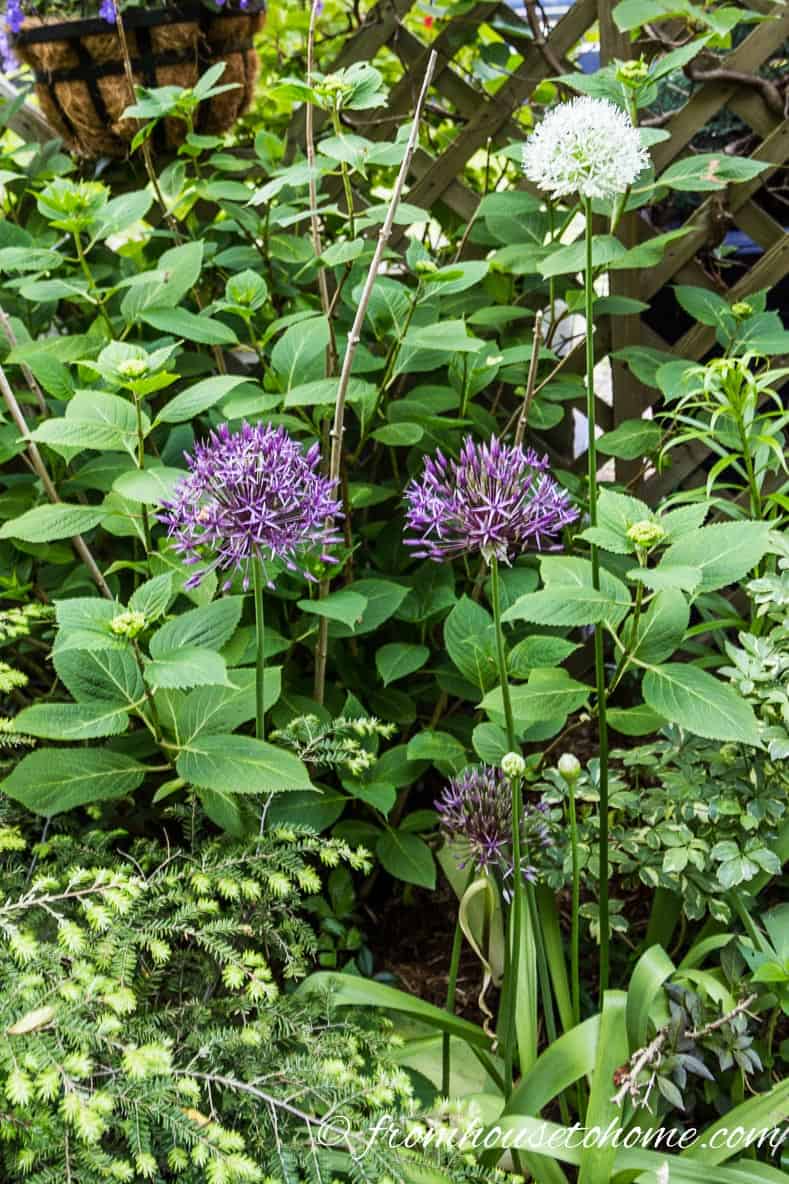
Instead, try planting perennials or small shrubs in the same space as the the bulbs.
When they start to grow, they will help to camouflage the bulb leaves.
Click HERE for ideas on plants to grow with your spring bulbs.
Now, go out there and plant those bulbs so that you too can have lots of flowers in the spring!
Other Gardening Ideas You Might Like
- The Best Bulbs To Plant In The Fall
- Shade Plants To Plant With Spring Bulbs
- Purple and Blue Companion Plants For Spring-Flowering Bulbs
Comments or questions on how to plant tulips and other spring-flowering bulbs? Tell us in the section below.
Pin It So You Don't Forget It!
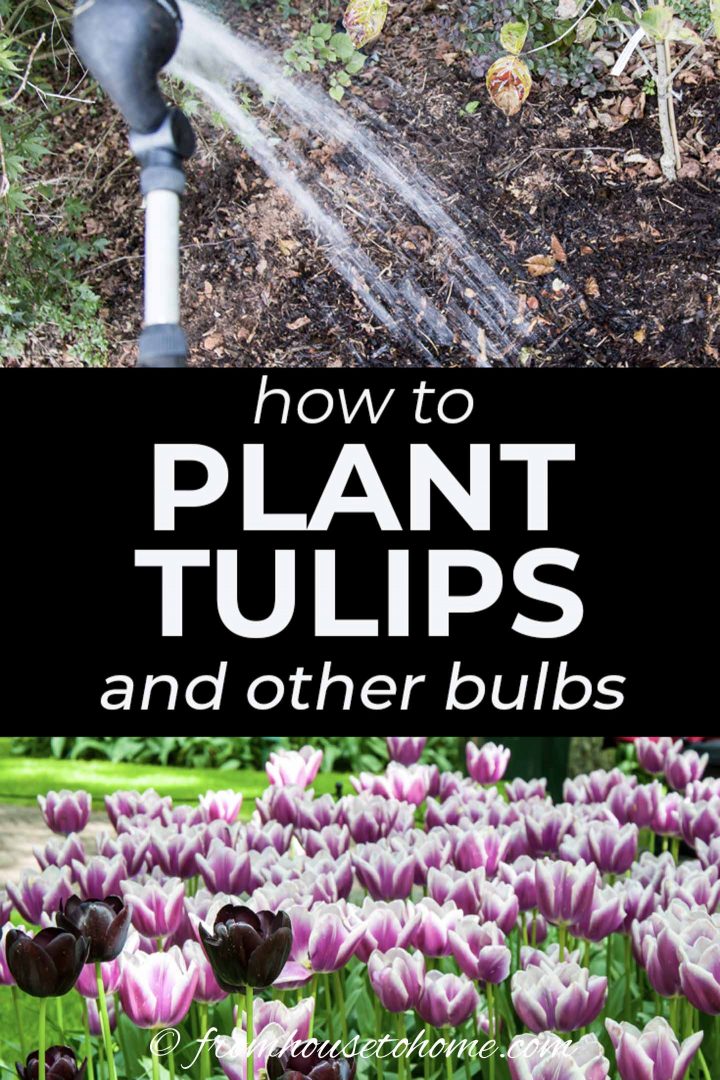
This post was originally published on October 2, 2017 but was updated with new content on November 23, 2024.




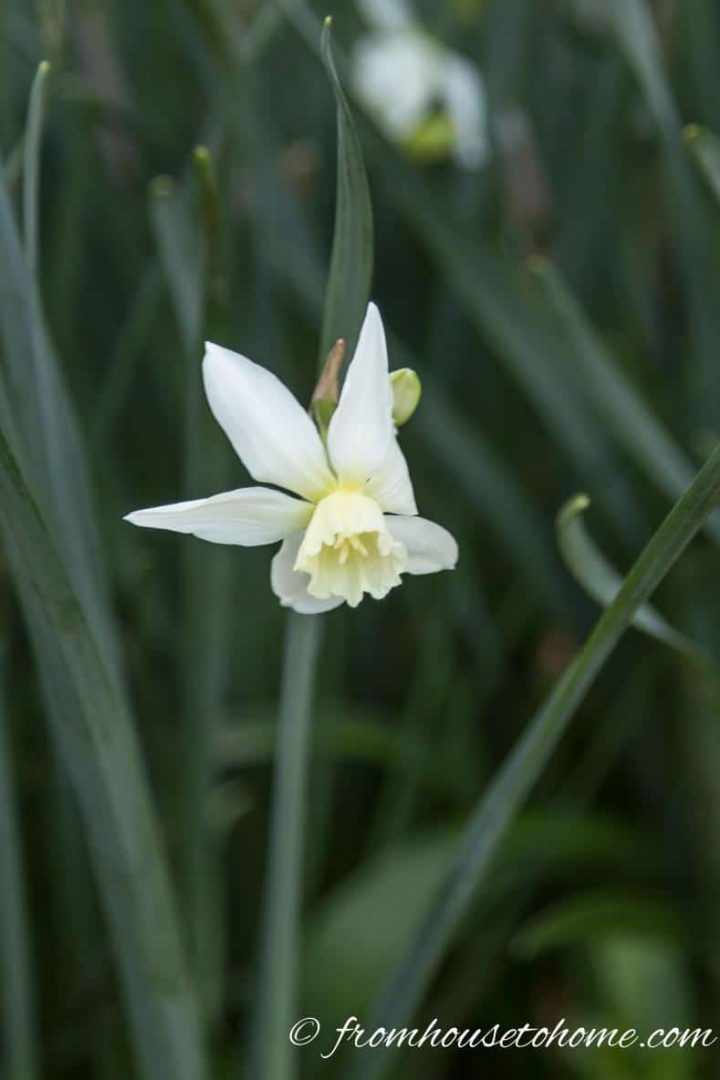
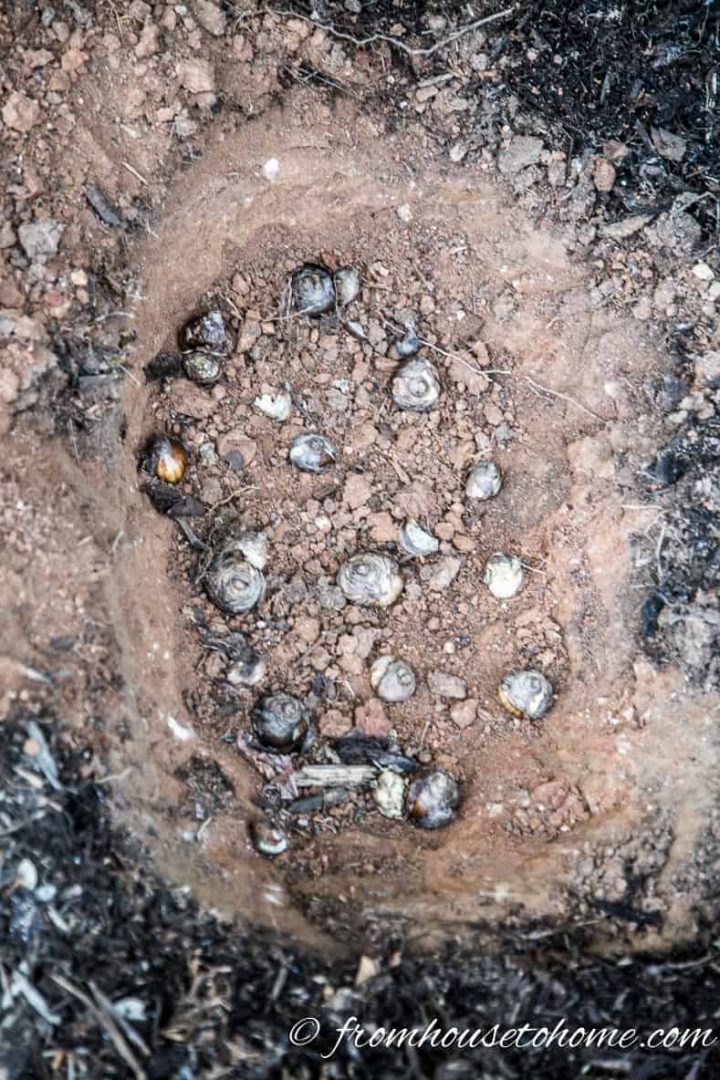



























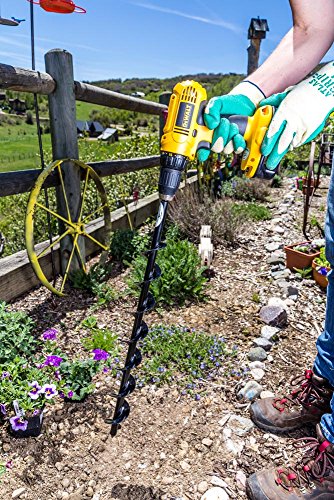
Hello: I live in south west Ohio. I have a new buckthorn shrub and a new nandina shrub. They are in big terra cotta planters on my patio. How do I protect them from winter weather in Ohio without transplanting them in the ground? Thank you.
Mrs. Lucente
I would create a form out of chicken wire that is wider and taller than the pots. Then fill it in with leaves or straw, working it in around the base of the plants. (You could also use bubble wrap). As a side note, if you don’t already have your pots a little off the ground (sitting on pot feet or bricks), you’ll probably want to do that to keep the bottom of them from freezing – Terra Cotta will break if it freezes and thaws.
Thank you for your quick response to my question. We will definitely give it a try and hopefully they will survive. The nandina has little flowers now, small the size of peas. Didn’t know that about them. The leaves were red when we bought the plant. So pretty. It has shoots coming from the base now, so glad, it seems to like it on our patio. By the way, should I protect the base of the plants over the dirt area as well?
Mrs. Lucente
It sounds like your nandina is very happy there 🙂 Yes, I would cover the dirt area as well (up about 3 or 4 inches) to give the plants some extra protection.
I want to deter weed growth in the bed by adding garden fabric and covering with river rock. What is the best method to do this?
Hi Dorothy…I haven’t tried growing bulbs with landscape fabric and river rock. They may be able to grow right through it (but I would probably try a few before planting a bunch that way). Otherwise, you might try planting the bulbs in groups and cutting the landscape fabric around where they are planted.